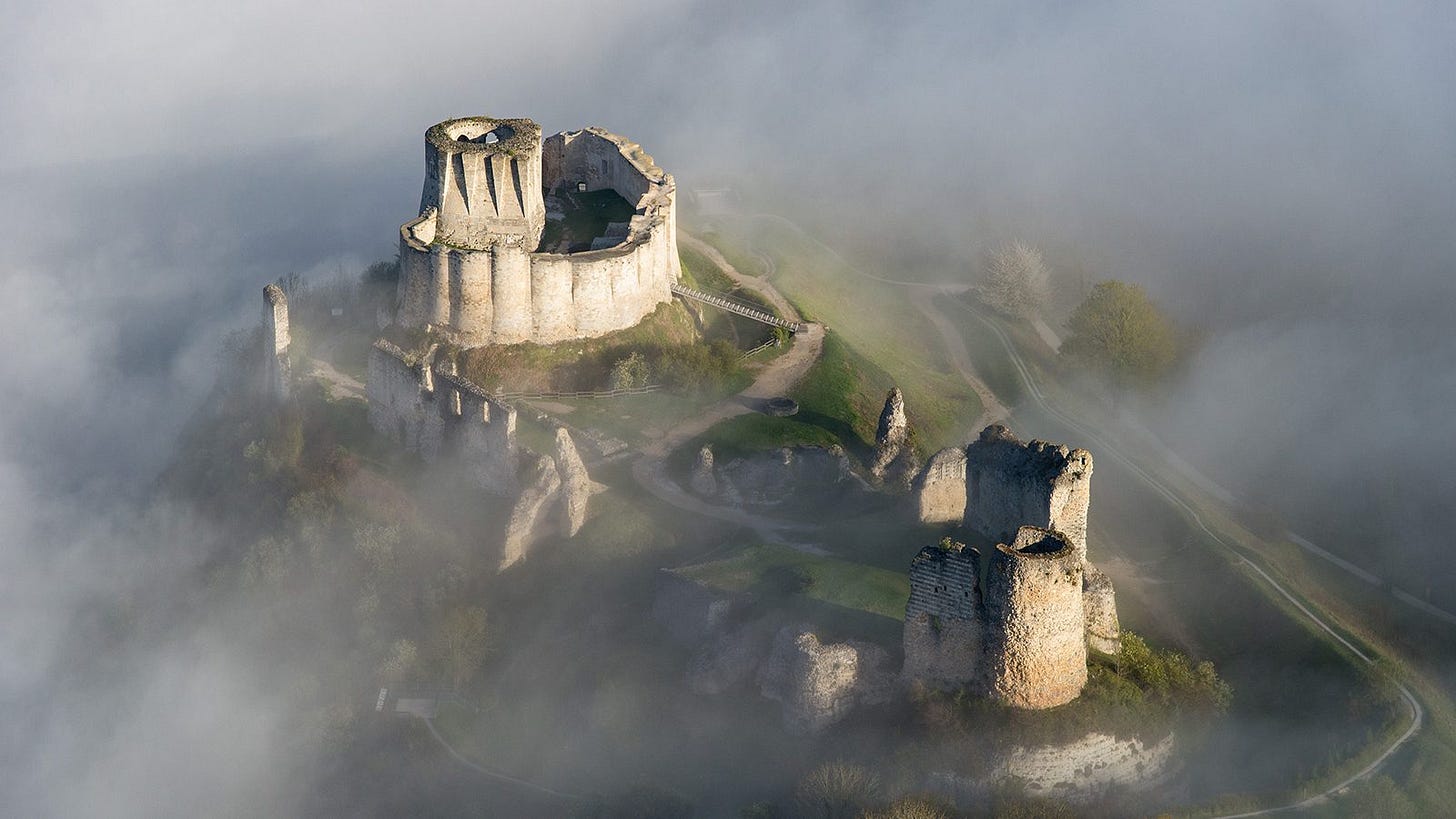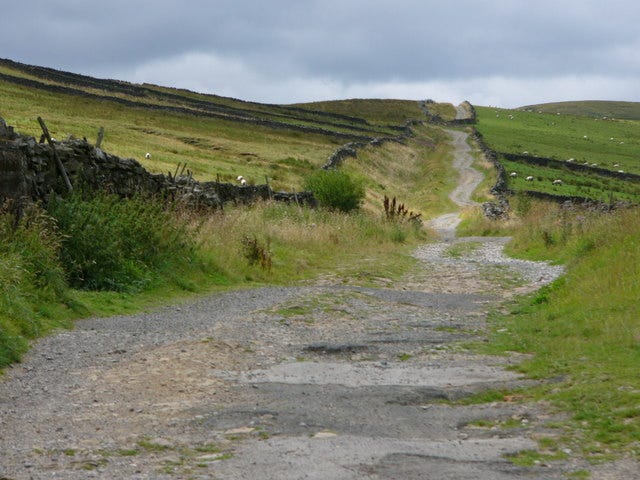Modern travel is a miracle. Want to visit Richard’s Château Gaillard, his famous impregnable castle, even though you live in the United States, across an ocean? No problem. Spend a little money, toss a granola bar in your bag, hop a six or seven hour flight, rent a car, drive for an hour, and you can cross an ocean and be here in less than ten hours:
Medieval travel was a bit more involved.
Unless you were a noble, you likely just walked. A knight or noble would ride a horse, perhaps even a wagon or carriage. Peasants (“villeins”) mostly could not leave their lands without permission of their lord and traveled infrequently or not at all. If they did travel it was either because they were going to a religious shrine or had found themselves in an army.
Nobles might travel for business, to hold court, or to manage their lands. Large parties, such as those of the king, consumed a lot of resources and therefore usually moved often, if in the countryside.
I’m currently working on a story, that involves travel from London to Glastonbury Abbey. (If you’ve been reading along, you will remember that Excalibur, the sword of Arthur, was reportedly discovered at Glastonbury during Richard’s lifetime. That might give you a clue where the story might be headed. So let’s suppose we have a protagonist who needs to get from London to Glastonbury and back. How long might that take?
The first and main variable is the presence of a road, and its quality. Much of England was spanned by Roman roads, such as the above. On a good Roman road, good progress was possible. The Roman road is often identified as one of the key ingredients in Rome’s ability to manage and hold a vast empire.
Ian Mortimer’s Time Traveler’s Guide to Medieval England is an essential resource for the aspiring historical novelist. Consulting it, and a few other resources, we learn:
Travel by foot: 15-20 miles per day, 6-8 miles per day in bad weather. There are many accounts of 30 miles per day under the right conditions and with the right “motivation”. A traveler pulling a cart holding goods or possessions might make 12 miles per day.
Horseback: A traveler on horse might make 20-25 miles per day, if he only had a single horse. A rich traveler, or a messenger, who might be able to exchange horses, might make 30-40 miles per day. Under the right conditions, perhaps as much as 50 miles per day.
Other major variables include the time of year, and the associated weather, and the amount of daylight. Only a messenger with an urgent need would normally travel by night. Maps were essentially non-existent, and people traveled by itinerary, from landmark to landmark, and might often need to stop and ask for directions from locals.
So how quickly might our aspiring traveler make it to Glastonbury? It’s about 130 miles as the crow flies (There was not a direct Roman road to Glastonbury, so they likely had to go west to Bath and then down to Glastonbury). So, on foot, perhaps 8-10 days depending on the above variables. On horseback, with a bit of motivation, perhaps 5-7 days. And then double that to get back, so we’re talking about a 2 week trip at minimum, excluding time spent dealing with horses, getting provisions, and fighting off bandits.
Bonus: want to play the game yourself? Try the ORBIS Roman Road travel simulator: https://orbis.stanford.edu/
The plane thing seems a bit easier.
Sources:
The Time Traveler’s Guide to the Middle Ages, by Ian Mortimer











Fantastic picture of Château Gaillard! As for travel during the time of Richard, it was what it was. Not many coaching inns, maybe monasteries, hospitals - places where pilgrims stayed. I'm guessing you were mostly on your own and, as you put it, at the mercy of whatever came your way.